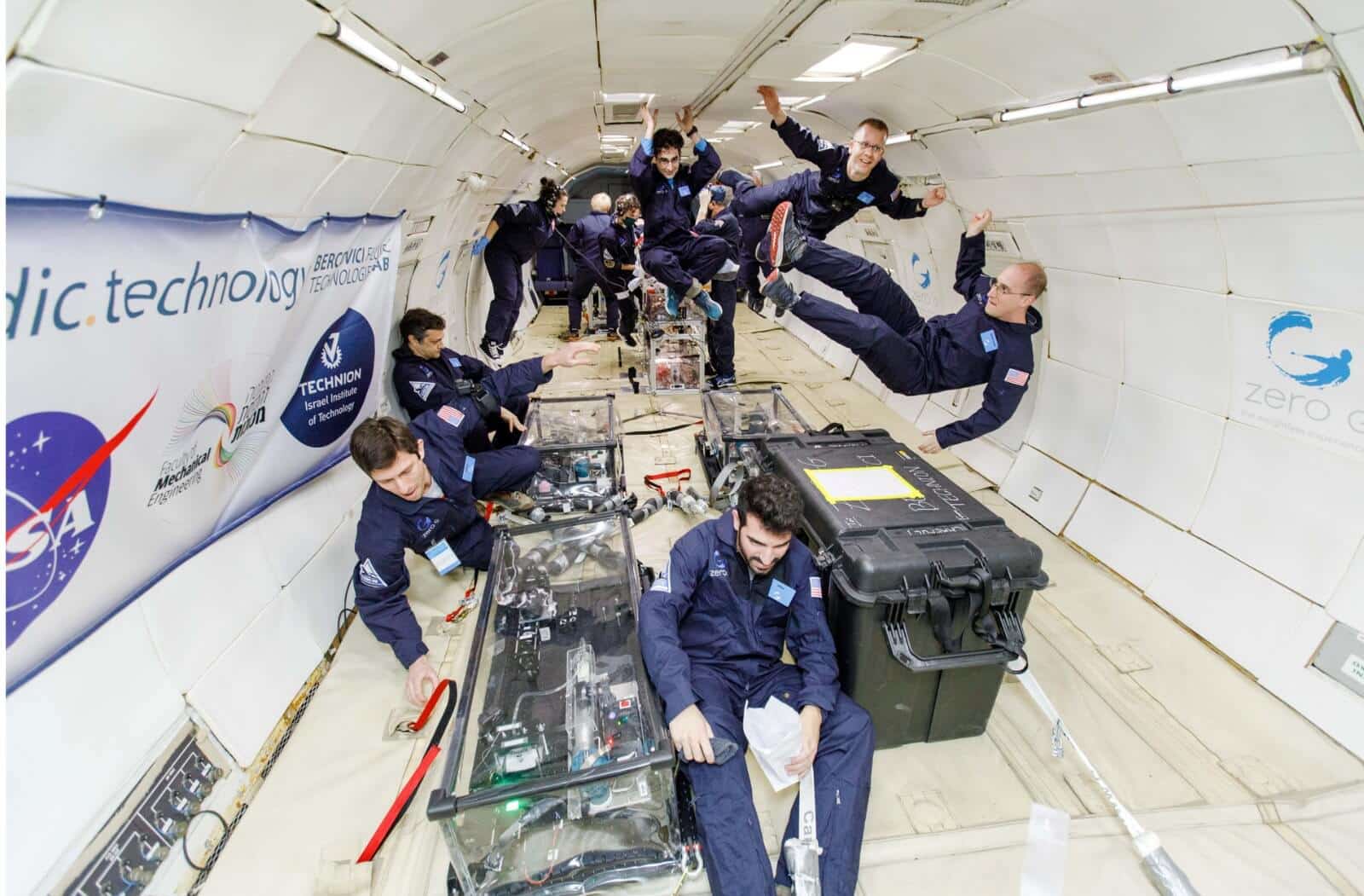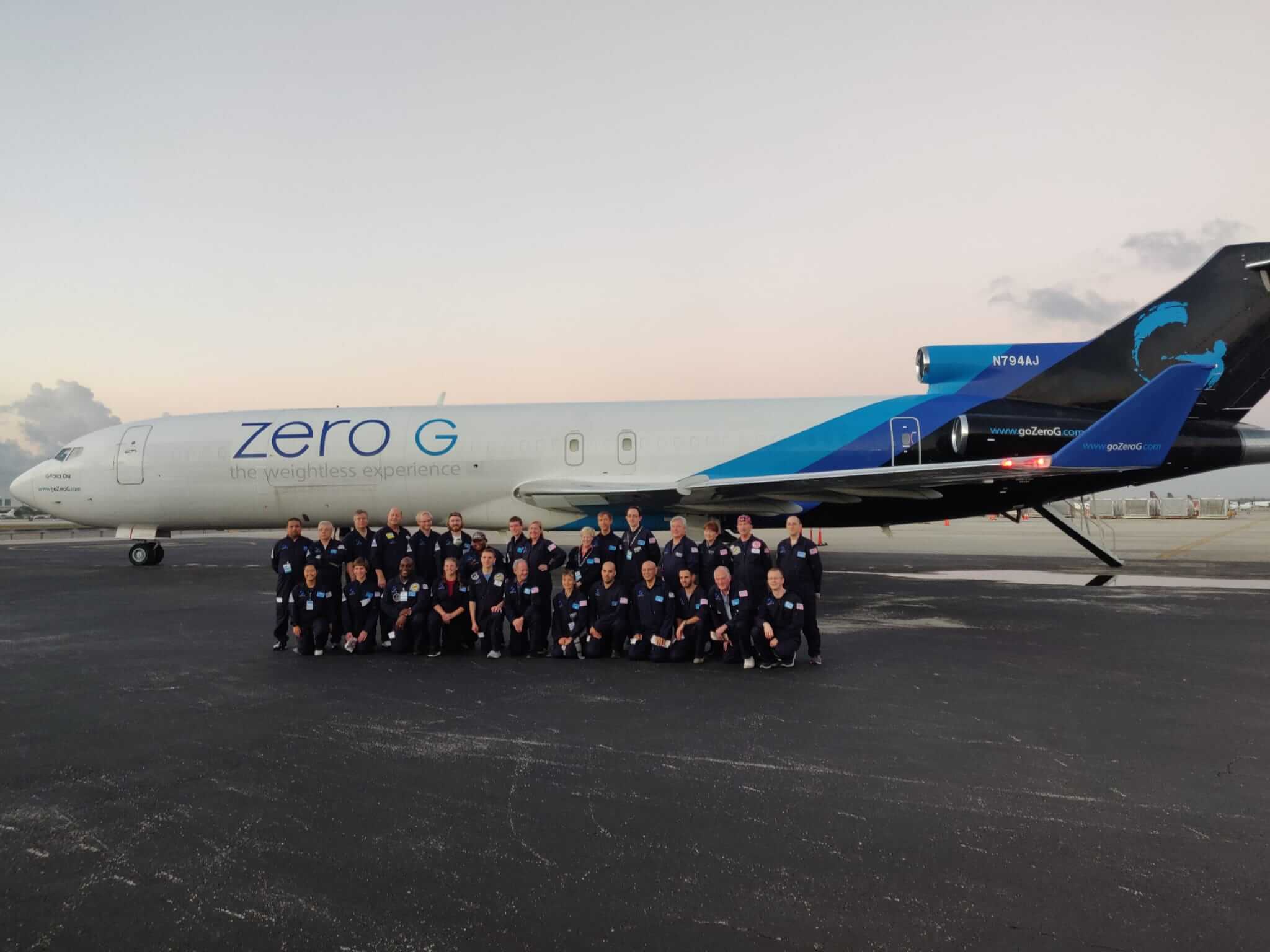A group from the Technion managed to produce lenses in zero gravity in 20 seconds in a unique NASA plane
Space telescopes are of immense importance both in fundamental understanding of the universe of physics and in more applied tasks such as tracking asteroids that may collide with Earth. The size of the telescope is of great importance, as the larger the telescope, the more light it can collect and the better its resolution..

Today, humanity is planning far future manned space missions, for example to Mars. Due to the distance, these missions must be completely independent, since the distance does not allow technicians, equipment or spare parts to be sent to the spacecraft. That is why the ability to create the necessary devices, including optical components, in the spacecraft itself is important.
Optical components make up a wide variety of systems in space from telescopes, through cameras and microscopes to the glasses that astronauts wear. The systems used for this on Earth - milling and polishing facilities - are cumbersome systems that cannot be launched into space.
The laboratory team of Prof. Moran Berkowitz from the Faculty of Mechanical Engineering at the Technion has developed a method for manufacturing optical components under microgravity conditions, by shaping a liquid into the desired optical shape based on the physics of liquids. If said liquid is a polymer, it can also be hardened in favor of manufacturing optical components of any size.

Following the success of the experiments in the laboratory, where artificial microgravity conditions were created through the interaction of different fluids, the researchers began to prepare for the next step: microgravity experiments in space. Indeed, soon the experiment is expected to go up to the International Space Station.
And in the meantime - last weekend in cooperation with NASA - Prof. Berkovic took off together with his research team for two hyperbolic flights in the atmosphere. Such a flight means that through the free fall of the plane, a kind of microgravity is created in it for about 20 seconds. Under these conditions the unique development was tested. The result: in the 20 seconds allotted to him, the team was able to successfully produce the liquid lenses.
Prof. Berkowitz estimates that this is a dramatic step on the way to creating large telescopes in space - a complex challenge faced by all bodies engaged in space research. As mentioned, the next step is an experiment on the International Space Station, which will be accompanied by an educational activity in which students in schools in Israel will participate.
Prof. Berkowitz emphasizes the contribution of the laboratory members to the development process and its success. According to him, "Omar Luria led all aspects of the design and construction - optics, mechanics and electronics - with infinite attention to detail. However, all of this would not have come true without the enormous contribution of each member of the team: Mor Algrisi, Dr. Valerie Frumkin, Daniel Vidaker, Israel Gabbai, Yonatan Erickson, Dr. Khaled Gomid, Aliza Shultzer and Alexey Razin."
More of the topic in Hayadan:
- which extracts oil from the sand
- The Technion will award the Gamunder prize for the development of space technologies for the development of a space telescope based on liquid lenses
- Cheap and fast technology for creating complex optical lenses using liquids
- When cinema and reality come together in the mission of dropping an asteroid: the DART spacecraft is launched
- Researchers at the Technion achieved an improvement in the separation capacity of telescopes without increasing the telescope's mirror
